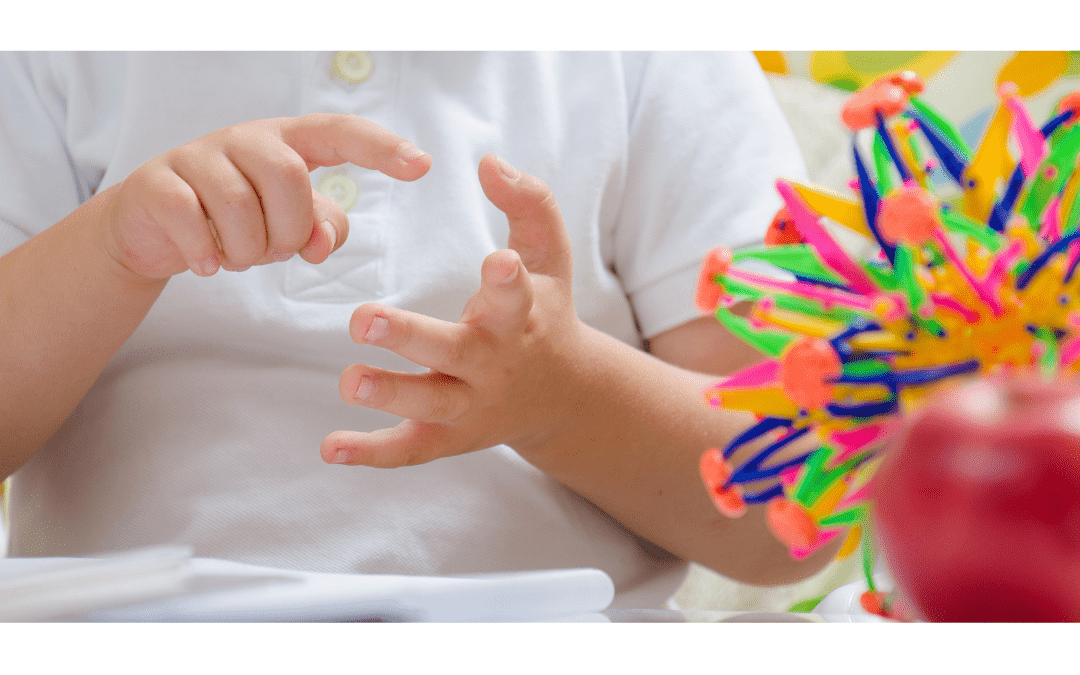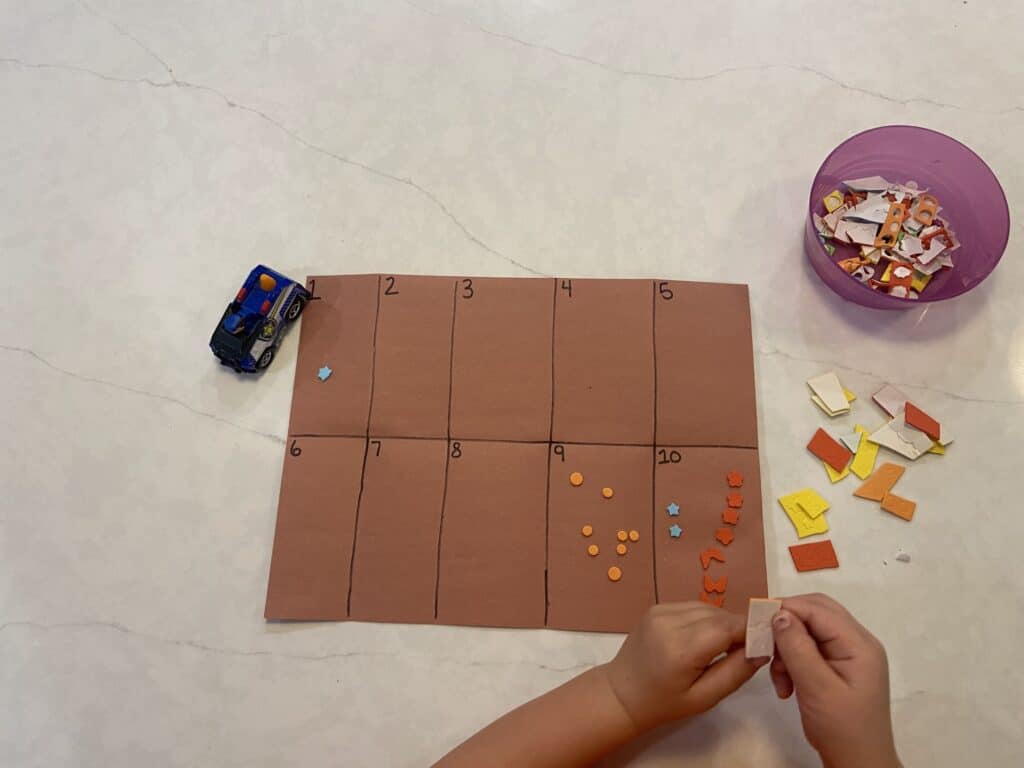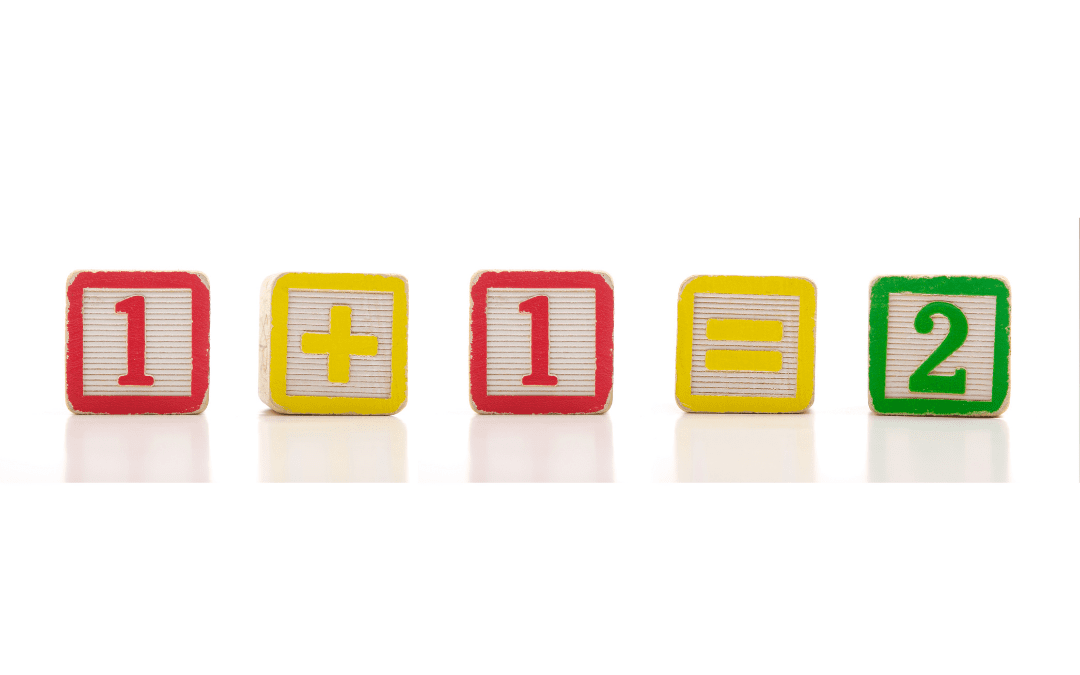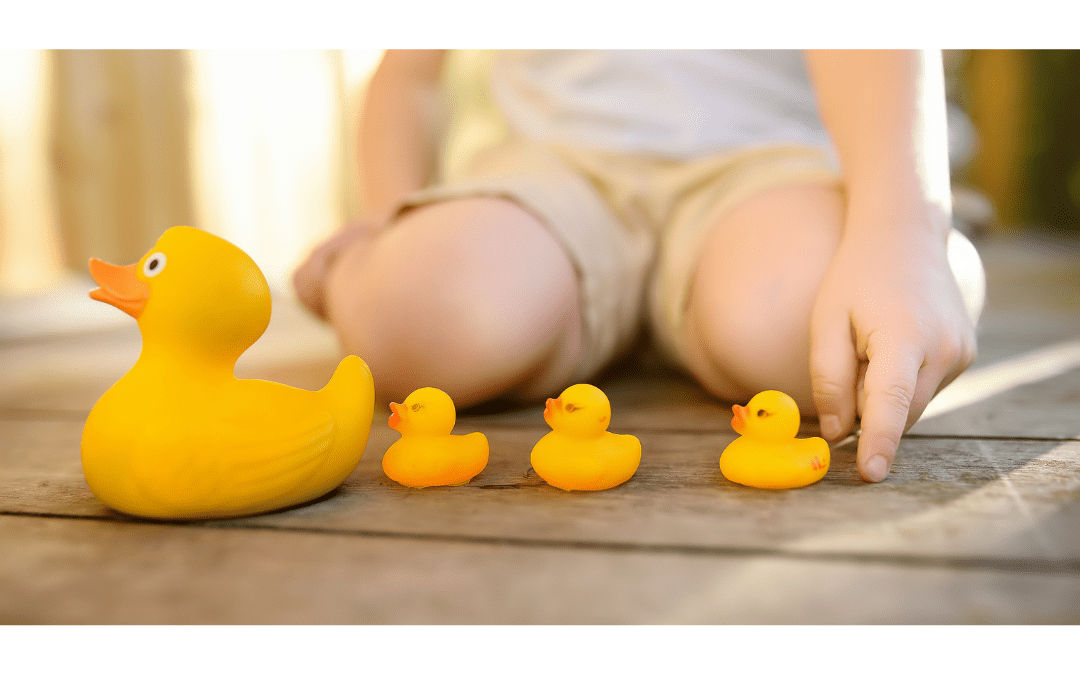Wondering how to introduce preschool math concepts to your child? Fortunately, there are lots of easy ways to incorporate learning math skills into daily toddler life.
Preschool math is all about developing a basic understanding of mathematical concepts. Numbers, shapes, patterns, comparisons, and measurements are all important parts of fundamental understanding at the preschool level. Many of these skills are naturally developed as children explore and begin to understand the world around them.
Below are some fun ways to introduce your preschooler to fundamental math concepts before they enter Kindergarten!
Teaching math skills to preschoolers
Education in the early years is all about play-based and hands-on learning. This is also true for math!
Children naturally explore mathematical concepts through play every day. Sorting, organizing, lining up toys, and counting objects are examples of math naturally occurring in everyday life. Other examples include recognizing shapes and colors, putting together puzzle pieces or Lego blocks, or making comparative statements like “I am two years older than my sister!”
By building on these preschool math concepts in a fun and engaging way, you can promote a love of math for your preschool-aged child while introducing them to the essential skills they will use in the years to come.
This article will share 5 key areas your child will focus on in preschool mathematics: numbers and counting, addition and subtraction, geometry and spatial reasoning, sorting and patterns, and measurement.

Numbers and counting
Numbers and counting cover a broad range of mathematical concepts. Within this is number sense, which is all about understanding numbers and how they relate and connect to each other, as well as how to manipulate them.
This skill lets children perform basic math operations and understand how numbers work and includes the idea of one-to-one correspondence (the understanding that each number has its own value, or one object = 1). This helps children understand quantity and value.
Understanding numbers gives your child the foundation they will need to complete more complicated mathematical concepts later in life.
Concepts
At this age, the focus should be on numbers 1-10. It’s easiest to start with concrete examples – Teach your little ones to count by using real-world examples! Count the snacks on their plate, the flowers in your garden, or the number of toys in front of them. By asking them to count objects, they practice rote counting.
After a lot of practice, your preschooler will begin to understand numbers as having one-to-one correspondence. Basically, this means that your child will understand that numbers represent specific quantities. They will also grasp the concept of number cardinality, which is an understanding that the last number counted represents how many objects there are in total.
The next step in your child’s learning is conceptual. They will soon rely less on having to see the objects they are counting and will start developing their number sense.
With a solid understanding of numbers, your little one can also learn to:
- Quantify (understand quantity)
- Identify numbers (name them)
- Order and sequence
- Practice subitizing (recognize groups of numbers without counting them individually)

Practicing at home
Practicing to count is pretty easy! Here are some basic ideas to get your child excited about numbers and counting:
- Encourage counting (and count together!)
- Everything is a counting opportunity when you’re creative enough! Encourage your little one to explore the mathematical world around them by counting and comparing objects
- Count something, then write the number down with them
- Recognizing not just the number of objects but the number that they represent is an important step in their learning!
- Compare items
- Ask your child: “Are there more red flowers or blue flowers in the garden?” or “Do you see more orange crayons or yellow crayons in the box?”
- Introducing language like more/less than and the same as provides a solid foundation in math preschool math language

Addition and subtraction
After your child develops their number sense, you can move on to composing (adding) and decomposing (subtracting) numbers. This is an exciting next step in your child’s conceptual understanding of math!
Much like introducing numbers and counting, introducing adding and subtracting with physical objects is a great place to start. This way, your child will understand what it really means to add and take away objects.
My advice? Start with addition first, then move to subtraction! Some children find taking away to be a more difficult concept.
Practicing at home
Though you know your child (and how they enjoy learning) best, I encourage parents to provide different types of learning activities for this math concept. Try using pictures, games, and videos to help them understand this preschool math concept.
- Grab a set of objects and practice adding in a concrete way. For example, ask them “I have two apples. If I add one more, how many apples do I have?”
- Once they answer, count the total with them to check that they got it right!

Geometry and spatial reasoning
Geometry: The first step to teaching your preschooler about geometry is identifying 2-D shapes. Helping them learn circles, ovals, squares, rectangles, and triangles is a good place to start. Once your child recognizes 2-3 objects, try moving on to 3-D objects!
Real world examples can help you to compare items while teaching them the difference between the two. For example, you could talk to them about how a flat coin is a circle, but a basketball is a sphere.
Spatial Reasoning: Spatial reasoning is a concept related to the description and spatial relationship of shapes. You can introduce descriptions to your children by talking about how to describe shapes and their characteristics by describing things as “straight,” “curly,” “wavy,” etc.
To introduce spatial relationships, talk with your children about how an object takes up space in its environment. Is the square beside the triangle, or is it on top of the triangle?
Practicing at home
- Draw together! Show your little one how to draw each shape. They can also learn by tracing and drawing stencils, too
- Practice identifying shapes in the world around them. For example, you could ask “What shape are your cheerios?” or “This plate is a circle. Can you find any other circles in the room?”
- Compare items: Which triangle is big? Which one is small?
- You could have your child organize the shapes from biggest to smallest
Sorting and patterns
Sorting: Have you ever observed your child lining up their toy cars (or other toys)? This is an example of them naturally exploring sorting.
Encouraging your little one to sort by different categories is a great way to get them thinking deeper about sorting. You could try sorting objects in many different ways: by colour, by weight (light vs. heavy), category (cars vs. dinosaurs), etc!
Patterns are something that occur naturally and are something we can create. Help your child understand what a pattern is by starting simple. You could do this with food by giving them a mixed bowl of fruit and making a pattern with them. Start simple (strawberry, blackberry, strawberry), then move to more complex patterns like one strawberry, two blackberries, one strawberry, etc.
Practicing at home
- Sorting activities are super easy to DIY. Simply grab a bowl of assorted objects, describe how they should be sorted, and let your little one give it a try!
- Identify patterns whenever you see them in the world around you, and challenge your little ones to create their own
- You can do this with objects, in drawings, or with actions (pattern dances, maybe?)
Measurement and graphing
At this age, graphing is pretty basic! Your little one can begin to compare everyday objects to each other. For example, they can compare who in their family is taller (or shorter!) than them or they can measure objects to see which are longer.
Practicing at home
- Compile a bunch of objects and have measurement conversations. Consider asking questions like:
- Which is longer, the string or the ribbon?
- Which is taller, the cup or the bowl?
- Which object is the shortest? (or tallest/longest)
- Have conversations about everyday objects by asking questions like “which tree do you think is tallest?”
There you have it! These are the basic preschool math concepts that your child will be learning as they begin to explore math in the world around them. Teaching them these concepts will excite them about math and get them ready for the next stage of learning when they enter kindergarten in the coming years.
Conclusion
There are a lot of extremely important math skills taught at the pre-k level. By integrating mathematical problems and integrating appropriate language into your daily routines, your little one will have a strong foundation in the essential pre-k math skills that set them up for long-term success.
Early math concepts include measurement and graphing, sorting and patterns, geometry and spacial reasoning, adding and subtracting, and numbers and counting. While this may seem like a lot of math skills to learn in only a few years, children learn very quickly! Giving them lots of opportunities to practice counting, to enhance their reasoning skills, and to sort objects are examples of easy ways you can integrate math into daily life. Doing so helps children learn in a stress-free way, which is essential for early childhood development.
What are some of your favorite ways to practice pre-k math at home?
More posts about math for early learners
If you’re looking for other posts about math, then you may enjoy some of these! The posts below are all for preschool and kindergarten-level math.

Leave a Reply